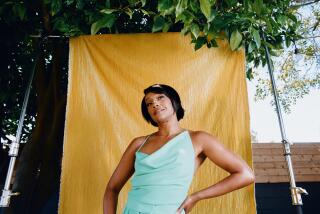The Resurrection of Handel Continues
We continue to reap the benefits of the “discovery” of Handel brought about by the festivities in 1985 attending the tricentennial of his birth.
That event, with its countless performances throughout Europe and the United States (Los Angeles’ participation was nominal at best) of music that had been gathering dust for more than two centuries, created a deeper awareness than had ever before existed--perhaps even in England--of the broad-ranging genius of a composer theretofore represented by only a handful of works.
That Los Angeles--and, for that matter, the visiting Britishers--has chosen again virtually to ignore the greatest British composer of them all during the current UK/LA Festival is incomprehensible.
But there are always recordings. And the Handel recordings continue to arrive in unabating profusion--as if it were still 1985.
The opera “Tamerlano” dates from 1724, immediately following “Giulio Cesare” and is, like its predecessor, a work of both stunning dramatic impact and seemingly endless melodic invention. The libretto, by Agostino Piovene and Nicolo Haym, is--unusually, for its time--based not on mythology or ancient history but on a historical event of the relatively recent past, the capture and death of the Turkish sultan Bajazet at the hands of Tamerlane the Great, king of the Tartars, in 1402.
The three-hour-long epic has been recorded before, but with nothing like the attention and expertise lavished on it in a newly released edition (Erato 88220, three CDs) derived from concert performances given in Cologne.
John Eliot Gardiner leads his English Baroque Soloists orchestra, playing on period instruments, and Monteverdi Choir with characteristic verve. The vocal parts are strongly cast, most notably the title role which is taken by Derek Lee Ragin, a young New Jersey-born countertenor who combines a voice of cutting clarity with dazzling agility and strong dramatic instincts. His adversary, Bajazet, is a figure of tragic poignancy as sung by baritone Nigel Robson.
Senesino, the Italian alto castrato for whom Handel created several of his most imposing operatic roles, seems not to have commanded the range, acrobatic skill and fiery temperament required for a part like Tamerlano.
But his voice was by all contemporary accounts an instrument of uncommon sweetness and fluency. As is that of American countertenor Drew Minter, who is heard in a recital of “Arias for Senesino”--from “Giulio Cesare,” “Rodelinda,” “Orlando” and others--in the company of our leading period-instrument orchestra, the San Francisco-based Philharmonia Baroque under the lively direction of Nicolas McGegan (Harmonia Mundi 905183, CD).
A program covering some of the same territory, but not nearly so stylishly, features German countertenor Jochen Kowalski and the C.P.E. Bach Chamber Orchestra of East Berlin conducted with mechanical efficiency by Hartmut Haenchen (Capriccio 10 213, CD).
The arrival of a new recording of the oratorio “Saul” (Teldec 8.35687, two CDs), a work dating from 1739, is a treasurable souvenir of live performances given in Vienna during the tricentennial and doubly welcome for marking the return to general availability in the U.S. of Teldec, a label which, with its releases of a vast amount of material performed by Nikolaus Harnoncourt and his Vienna Concentus Musicus ensemble, gave many of us of our first large dose of recreated Baroque style.
But the Harnoncourt who directs this “Saul” is a wiser, more polished musician than the one who, whether out of conviction or a simple desire to shock, committed a number of outrages against Bach and Handel a decade ago in the name of scholarship.
“Saul,” to a libretto by Charles Jennens that owes a good deal to Shakespeare, is drama of an intensity and psychological depth rare even in Handel. The plot centers not on the conflict between Saul and David and the differences in their characters but on the mental decline of Saul and its tragic effect on his son Jonathan, torn between love for his father and friendship for David.
The oratorio has a half-dozen meaty solo roles and countless examples of Handel at his most orchestrally daring, as in his striking use of trombones and of the carillons. Then, too, there is the darkly scored scene for Saul and the spirit of the prophet Samuel, which foreshadows the cataclysmic encounter of King Philip and the Grand Inquisitor in Verdi’s “Don Carlos.”
Dietrich Fischer-Dieskau offers a deeply affecting, at times terrifying, portrait of the once-proud Saul’s deterioration, with Anthony Rolfe-Johnson most sympathetic as the bewildered Jonathan. Countertenor Paul Esswood is rather too unctuous in his delivery to project David’s staunchness, but soprano Julia Varady captures to perfection the noble grief of Saul’s elder daughter, Merab.
Harnoncourt’s leadership of the Concentus Musicus does not aim for the rhythmic springiness, the dash that Gardiner favors. But the Viennese conductor’s work is no less valid for its heavier, Germanic logic--and particularly impressive in its highlighting of the oratorio’s monumental aspects, exemplified by the grandiose choruses, handsomely sung, and in intelligible English, by the Vienna State Opera Chorus.
More to Read
The biggest entertainment stories
Get our big stories about Hollywood, film, television, music, arts, culture and more right in your inbox as soon as they publish.
You may occasionally receive promotional content from the Los Angeles Times.






